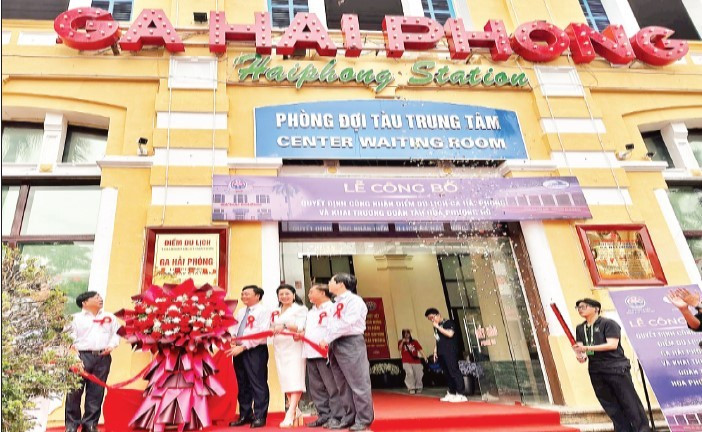The Ha Noi–Hai Phong railway line was constructed in 1901 during the French colonial era. Hai Phong Station, with its well-preserved classical French architecture after more than a century, stands as a distinctive historical and cultural landmark of the city, offering great potential for tourism development. According to Tran Thi Hoang Mai, Director of the Hai Phong Department of Culture, Sports and Tourism, the railway is not merely a means of transportation but also an integral part of the city’s and the nation’s historical and cultural heritage. This presents a favourable condition for Hai Phong to research, develop, and expand tourism products linked to the railway.
On the part of the railway sector, initiatives such as the “Railway Tracks – Flower Paths” campaign, with the idea of planting a characteristic flower species along each rail segment, or transforming each station into a cultural check-in destination, have provided passengers with more engaging experiences. In addition, efforts have been made to strengthen partnerships with tourism associations and travel businesses in Hai Phong, Ha Noi, and neighbouring provinces to develop railway-based tourism products along the Ha Noi–Hai Phong route. These include organising combined travel programmes featuring train journeys, sightseeing, culinary and cultural experiences in Hai Phong, along with promotional campaigns to stimulate tourism demand.
Nguyen Chinh Nam, Deputy General Director of Vietnam Railways Corporation, stated that in 2023, the number of train passengers on the Ha Noi–Hai Phong route reached 1.46 million, and rose to 1.53 million in 2024. This is a positive signal, indicating that travel and tourism demand via railway remains substantial, provided that appropriate products and services are available. To meet this demand, the railway sector has continuously improved service quality, replaced train carriages, built VIP lounges at major stations such as Ha Noi, Hai Duong, and Hai Phong, and offered motorbike and public bicycle rental services for travellers at stations.
Recently, Hai Phong Station was officially recognised as a tourist destination and began operating the Hoa Phuong Do (Red Flamboyant Flower) train on 10 May. This marks an important step in connecting the railway transport system with the city’s tourism ecosystem, allowing visitors to begin their exploration journey as soon as they step off the train. Cao Van Tuan, Vice President of the Hai Phong Tourism Association, remarked that tapping into the potential of railway tourism not only enables the development of new tourism products but also contributes to the preservation and celebration of the railway sector’s heritage – a sector with over 100 years of history in Viet Nam. These trains are not merely a means of transport; they also carry the rich historical and cultural stories of the Hai Phong region.
Luu Hoang Diep, Director of S9 Hai Phong Travel Company Limited, shared that to sustainably develop railway tourism, it is necessary to improve on-board services. For instance, videos introducing Hai Phong’s culture, cuisine, and daily life could be shown on the train to provide tourists with an immersive experience during the journey. At the same time, the city should plan for integrated zones of restaurants and traditional music performances near the station to better serve visitors.
Close collaboration between the railway and tourism sectors is expected to open opportunities for developing experiential railway tours, connecting with Hai Phong’s renowned tourist destinations and neighbouring provinces. This will contribute to the preservation and promotion of the precious heritage values of the Red Flamboyant Flower City.
















